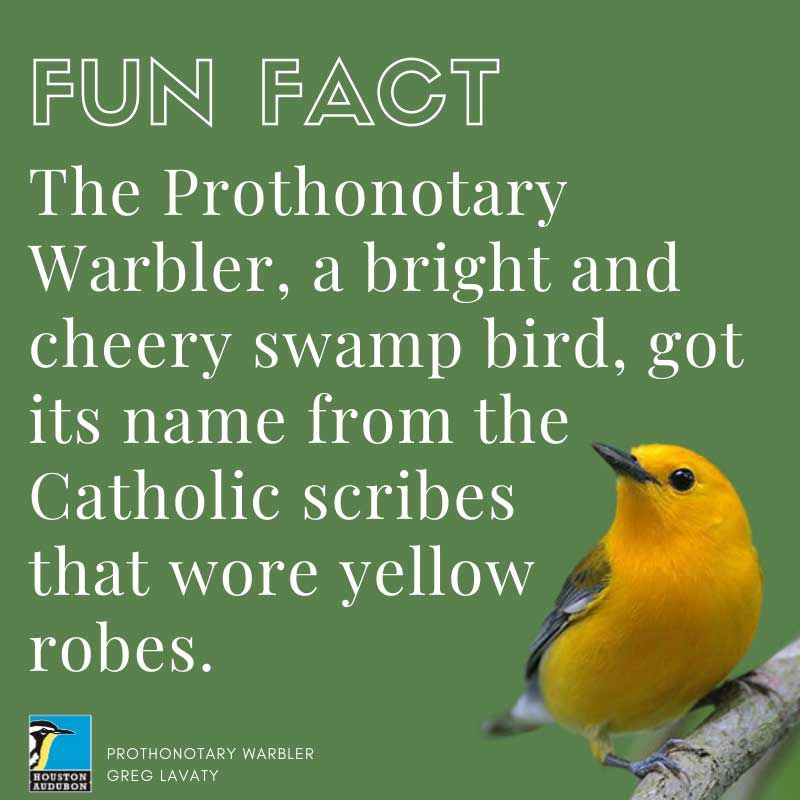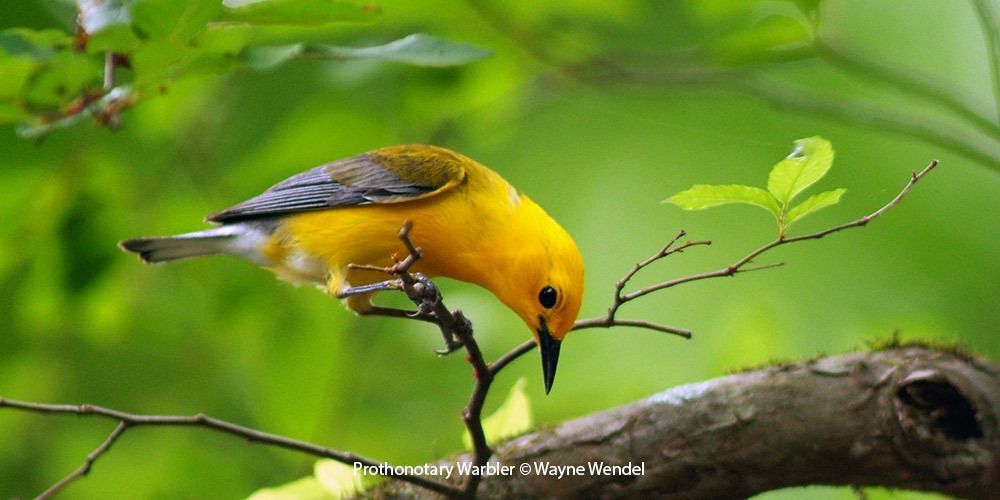Prothonotary Warbler
Protonotaria citrea
Family: (Parulidae) Wood-Warblers
Preferred Habitat: Wooded swamps.
Seasonal Occurrence: Very common in spring migration; common in preferred habitat in summer; occasional in winter
Profile by Glenn Olsen: The Prothonotary Warbler is the iconic breeding warbler of bottomlands, wooded bayous, creeks, rivers, and swamplands of the eastern United States, including those habitats in the eastern half of Texas.
This breeding warbler of the dark bottomlands and swamps glistens like a golden flame as it darts about defending territory or in search of food. The head, throat, breast, and belly of the male are a rich, bright, golden yellow. The blue-gray wings and yellow green back go almost completely unnoticed, so compelling is the bright yellow. The female looks very similar but is not as brightly colored. A.C. Bent thought that a more befitting common name for this species should be Golden Swamp Warbler. This name seems quite appropriate both for the color and habitat of the bird, but it just makes too much sense to be accepted. The common name and the genus are derived from the Latin protonotarius and refer to yellow robes worn by legal notaries and/or Vatican Registrars.
This species begins arriving in Texas mid to late March. Many more arrive in April and most continue northward to other breeding ranges. Once a suitable territory is located, the Golden Swamp Warbler begins to search for nesting cavities. This species has the unique habit of nesting in natural cavities and abandoned woodpecker holes within bottomlands and swamps. It is the only eastern warbler known to do so. Females arrive, courtship begins, and the timeless story of raising a family is retold. Once the young are self sufficient, much quicker in warblers than humans, individual birds begin their fall migration to the southern areas of Central America and northern South America where they will remain until the following March. Most individuals have left the U.S, by the end of October.
Unfortunately, this species, like many others, faces the potential of even more declines in its population due to loss of bottomlands and freshwater swamps where it breeds as well as loss of habitat in non-breeding areas.
During migration, these warblers can be found at Houston Audubon Sanctuaries at High Island. During Breeding months, look for them along secluded wooded bayous, in bottomlands or a swamp. I encourage you to search for this strikingly beautiful bird when they begin arriving in our area.
Profile by Bryce Loschen: The brilliant contrast between blue-gray wings, bright yellow body, and solid black eye makes the Prothonotary Warbler easy to identify as they hop from tree to tree just above the water in swamp forests or forested bottomlands. These birds rely on the forested wetland habitat that is declining in the southeastern United States. With their large bills, they glean insects off of low lying branches and snatch up snails and other small molluscs from the water’s edge. They sometimes also climb up tree trunks while feeding, as a Black-and-white Warbler does. The Prothonotary Warbler is amazingly one of only two warbler species that nest in cavities.
The population of the Prothonotary Warbler is decreasing due to habitat loss. You can help their population by placing nest boxes of the right size in your backyard if you live near the warbler’s preferred habitat. As these birds are starting to migrate as far as South America for the winter, they also will hang around coastal Texas and Mexico. So come take a hike around High Island trails and you just might see one!
Profile by Theresa Kelly: Like cardinals, the Prothonotary Warbler claims the unusually specific honor of “birds named for Roman Catholic robes of office.” The Prothonotary Warbler’s astounding yellow hue is its most defining feature, leading early ornithologists to name it after the yellow robes that papal clerks (prothonotaries) wear. The bright, stoplight-yellow of its head, chest, and belly is offset by gray wings, a gray tail, and a bill the same shiny black as its eye. Like many warblers, their appearance differs by sex — females tend to be slightly paler overall, crown and nape washed in faint green, and their bills are stouter than the males. Several warbler species may look similar to the Prothonotary at first glance, but size can be your first identification clue. As a whole, Prothonotaries are large and heavy-bodied compared to other warblers, and they possess noticeably bigger bills as well. The bird most commonly mistaken with the Prothonotary is the Blue-winged Warbler, distinguishable by white wingbars, a black eyeline, and its smaller size. Yellow Warblers, also more petite than Prothonotaries, possess yellowish wings and males have chestnut streaking on the breast.
Unlike most warblers which nest on the ground, in shrubs, or in trees, Prothonotaries build nests in holes in standing dead trees. They breed in wet environments like flooded bottomlands, wooded swamps, and forests near lakes or streams. Although much of their range tends to hug coastlines and island chains, they may follow forested rivers inland and settle as far north as New York or Michigan during the breeding season. The nonbreeding season finds the Prothonotary Warbler in warmer climates: Mexico, Central America, and the northernmost part of South America. Avid insectivores, Prothonotary Warblers eat spiders, butterflies, moths, beetles, flies, and other creepy-crawlies. In addition to insects, they also eat snails, mollusks, and, during nonbreeding season, fruits and seeds. They forage in the understory, hopping along branches and on the ground in search of food, and may even climb trunks and pick at bark like a Black-and-White Warbler.
Partners in Flight rates this beautiful bird as “high conservation concern.” Because they are habitat specialists, they are particularly vulnerable to the destruction and alteration of forested wetlands. Local populations have responded well to the installation of nest boxes and restoration of natural flood regimes in their breeding grounds. While the effects of natural predation are minimal compared to that of habitat loss, Prothonotary Warblers do experience predation from snakes and raccoons, as well as brood parasitism by Brown-headed Cowbirds. Brood parasitism is when birds lay their eggs in the nests of other birds, forcing them to divert resources from their own young in order to raise the cowbirds. As a common US visitor in April, Prothonotary Warblers first start appearing in High Island around March. They are an easy spot thanks to their vivid coloring. You can find them foraging low in the canopy…and if you don’t see them, you’ll certainly hear their high-pitched, increasing series of tweet-tweet-tweet. Recently (February 2025), a literal early bird was seen by Houston Audubon staff in Hooks Woods, likely the first February record for Galveston.
-
Cornell Lab of Ornithology
-
Bird Guide
-
Bird Library
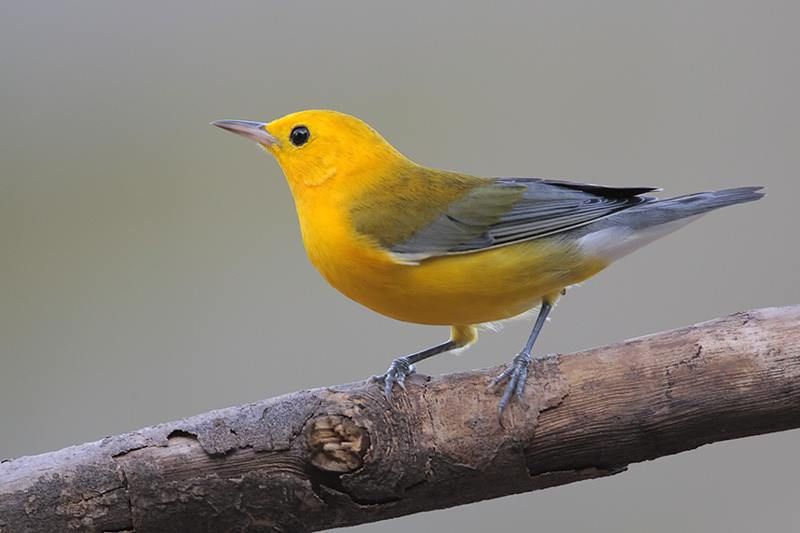
© Greg Lavaty
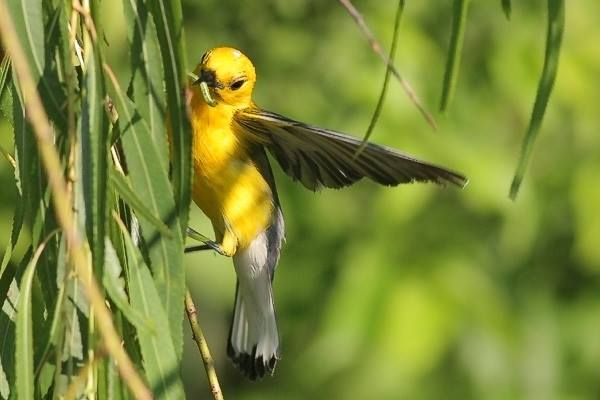
© Greg Lavaty
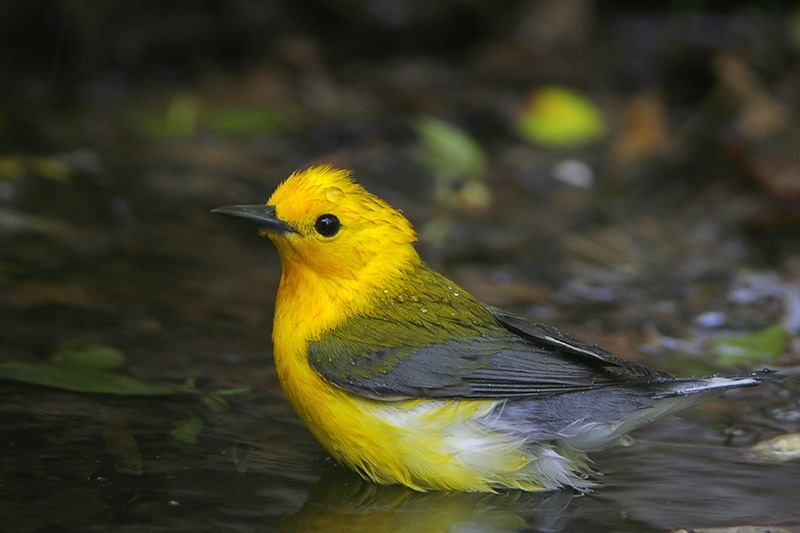
© Greg Lavaty
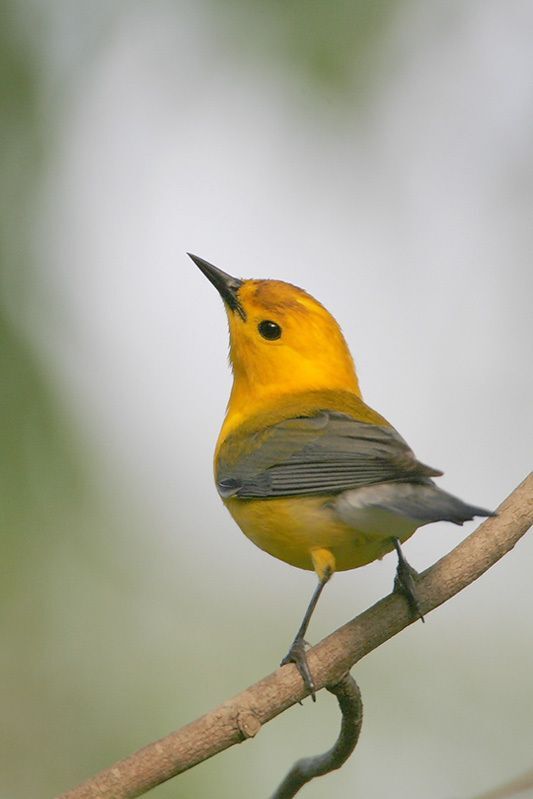
© Greg Lavaty, www.texastargetbirds.com
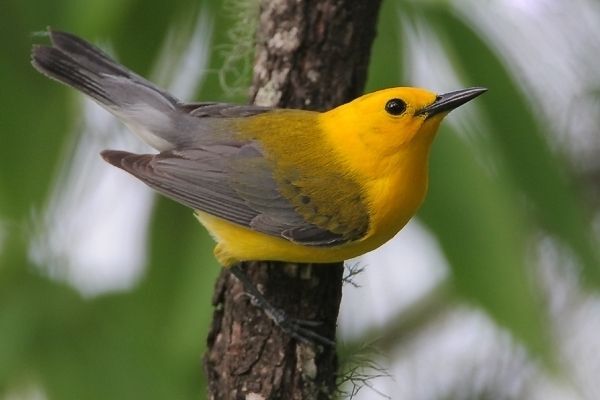
© Greg Lavaty, www.texastargetbirds.com
